
In the previous World Oceans Day post, I talked about some of the threats that the ocean faces, why the sea is important to us here in Singapore, and how our marine environment has changed in recent times. Despite the development and destruction of many of the habitats that once existed here, marine life has managed to survive, and in some places, even thrive.
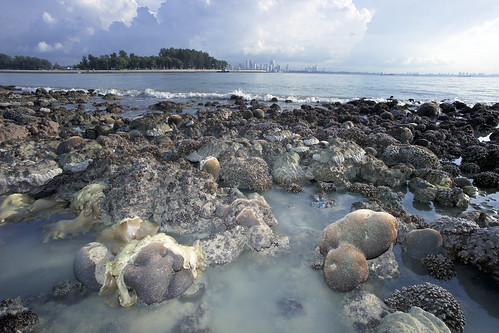
Coral reef exposed at low tide, Kusu Island;
(Photo by Ria)
Despite the high turbidity and murky water, we do still have coral reefs. They may not be as impressive as reefs elsewhere in the region, but the fact that a recent survey found that at least 161 species of hard corals can still be found on Singapore reefs goes to show that our waters are not as lifeless as many believe. We have about half as many coral species as Australia's Great Barrier Reef, despite our reefs being so much smaller.

Coral reef, Pulau Hantu;
(Photo by Debby)
Other nearshore marine habitats in Singapore include lush seagrass meadows, which provide habitat and food for a great deal of marine creatures, even dugongs.
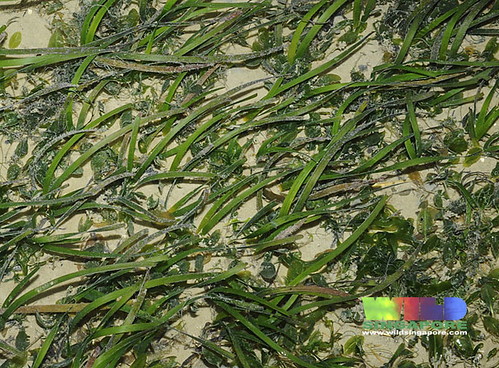
Seagrass meadows,Chek Jawa;
(Photo by Ria)
Many of Singapore's sandy shores are artificial, having been created by reclamation, instead of natural deposition of sediments. Yet life manages to colonise and settle in these man-made habitats.
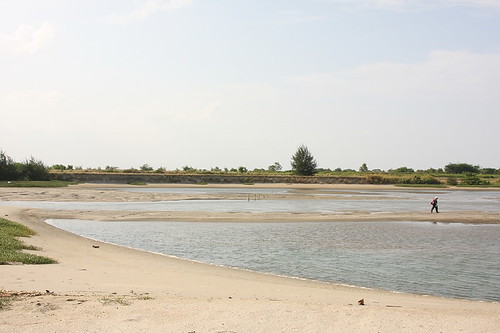
Sandy shores, 'Lost Coast' (somewhere off Changi East);
(Photo by James)
Similarly, many of our original rocky shores have since disappeared, but there are still remnants to be found. And the breakwaters and seawalls that we've erected in a bid to control the sea do serve as replacements.
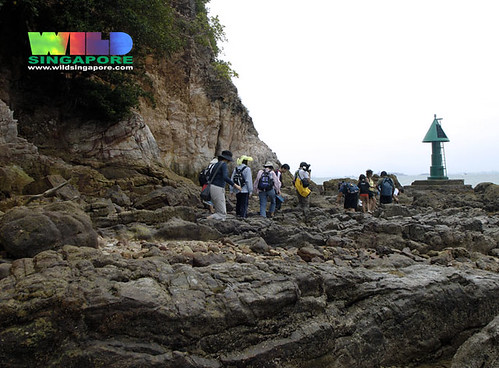
Natural coastal cliffs, Sentosa;
(Photo by Ria)
Many natural rocky shores also serve as the last strongholds of coastal forest in Singapore. The suite of plants that inhabit this ecosystem is different from that which lives in our inland forests of Bukit Timah and the Central Catchment Area, and are adapted to survive challenges such as soil erosion and landslides, and salt spray from the sea.

Elsewhere, where the sea actually floods the forest with the rising tide, one finds mangroves.
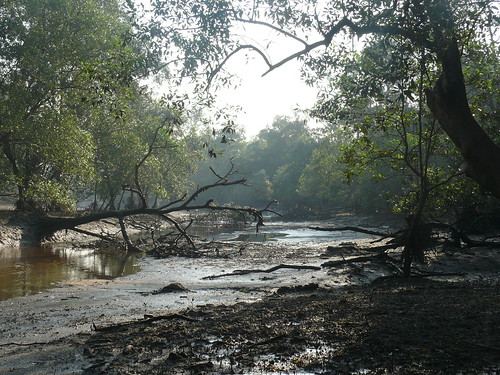
Mangroves, Mandai;
(Photo by Habitatnews)
Often associated with mangroves, mudflats harbour invertebrates like worms and molluscs that feed countless migratory shorebirds that visit Singapore while fleeing the winter up north.
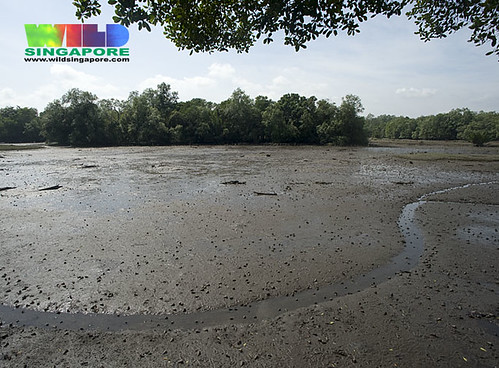
Mudflat, Sungei Buloh;
(Photo by Ria)
So, what can be found living in Singapore waters? Here are a few examples.

Knobbly sea stars, Cyrene Reef;
(Photo by Ria)
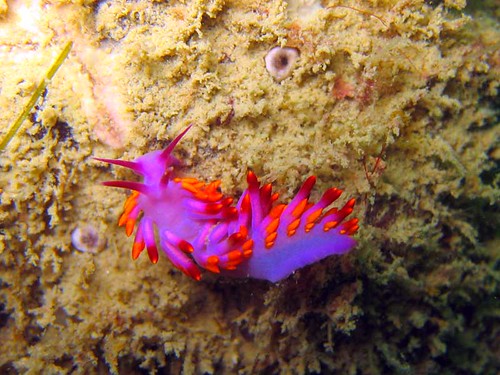
Nudibranch, Pulau Hantu;
(Photo by Debby)

Estuarine seahorse, Changi;
(Photo by Ria)
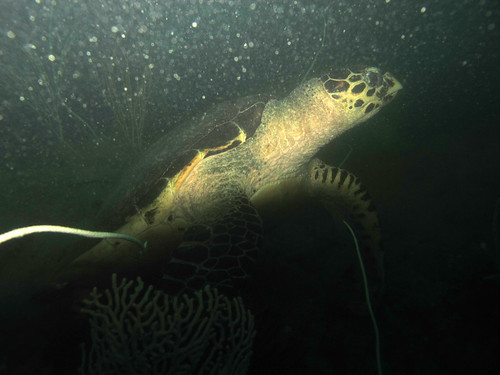
Hawksbill turtle, Pulau Hantu;
(Photo by Jeff)

Smooth otters, Sungei Buloh;
(Photo by Marcus)
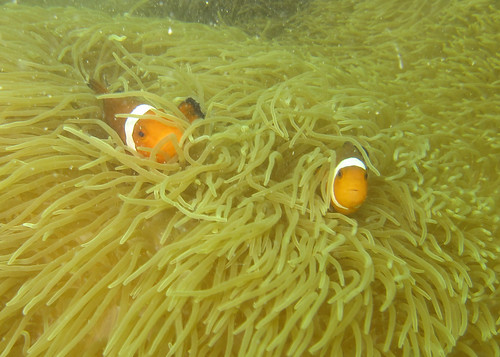
False clown anemonefish, Pulau Hantu;
(Photo by Jeff)
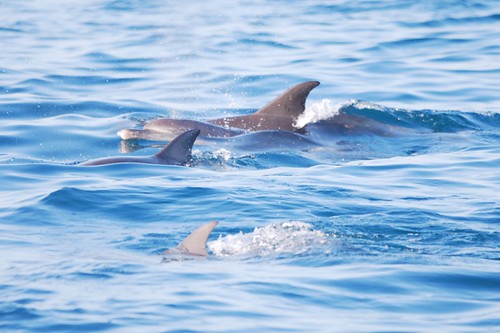
Indo-Pacific bottlenose dolphins, Singapore Strait. You don't need to visit the aquariums in Sentosa to see dolphins in Singapore!
(Photo by kokhuitan)
My friend Ria did up a series of posters that showcase some of the marine biodiversity and habitats that can be found in Singapore. Here are some of them:
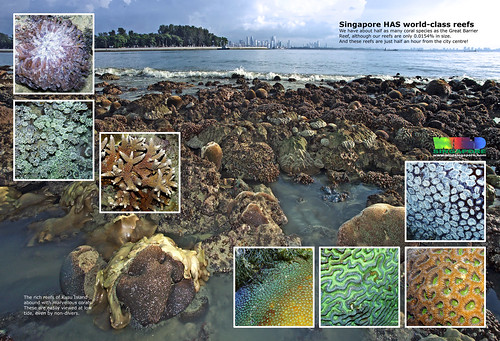
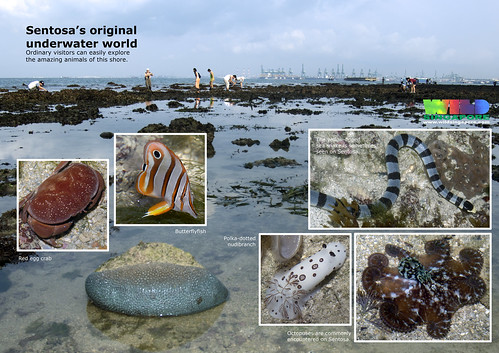
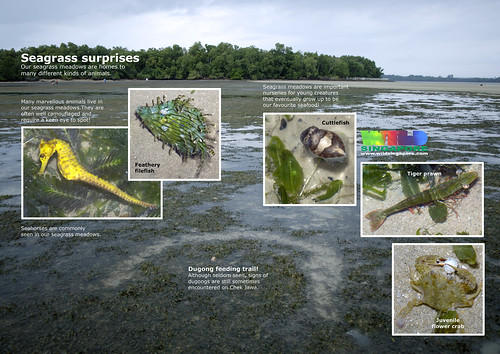
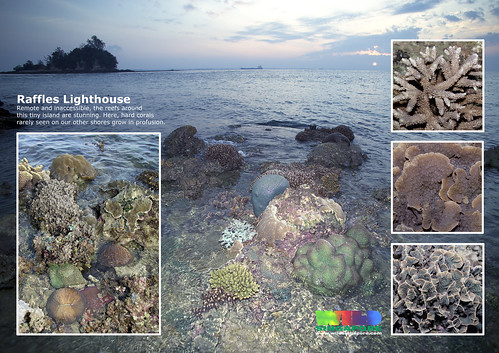
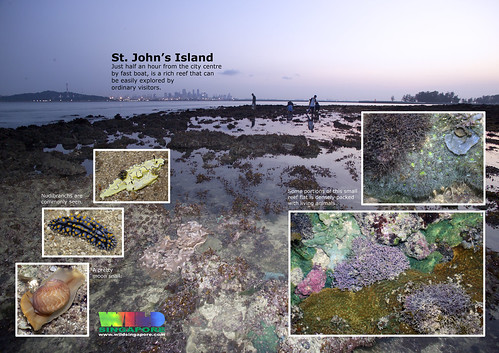
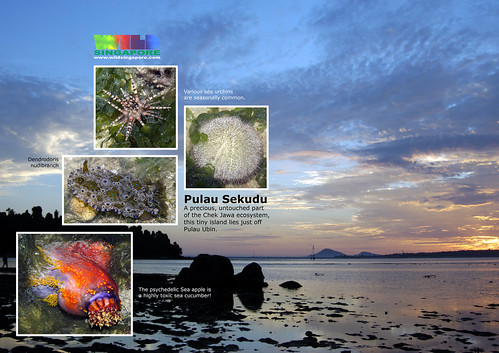
What can you do for the ocean?
My last post mentioned how we as Singaporeans depend on the ocean. Given that we are an island nation, we are never far from the sea, and it would be great if more of us were aware of the splendour of our marine environment, and how our daily actions and lifestyle choices can have an impact on the health of these habitats. For those of you who are interested in finding out more about our ocean, or wish to be more active and participate in activities to help Singapore's marine ecosystems, there are various avenues to explore. You don't have to be a marine biologist or certified scuba diver to appreciate what lives in our waters. All you need is a love for the outdoors, a willingness to step out from your air-conditioned offices and shopping mall and discover another side of Singapore.
For instance, the Comprehensive Marine Biodiversity Survey (CMBS), also known as the Mega Marine Survey, just concluded its Southern Expedition. A five-year project to identify, document, catalogue all the species that live in the seas around us, from the tiniest shrimps to massive sponges, the Survey is always looking for volunteers to assist in various duties. Although this effort has been spearheaded by local scientific bodies, and visiting specialists form an invaluable element of the team, much would not be possible without the contributions of volunteers as well, who participate in various roles, from collecting specimens during field surveys, to sorting and preservation. The Southern Expedition might be over, but the work still carries on.
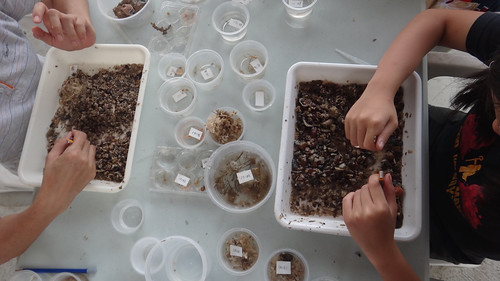
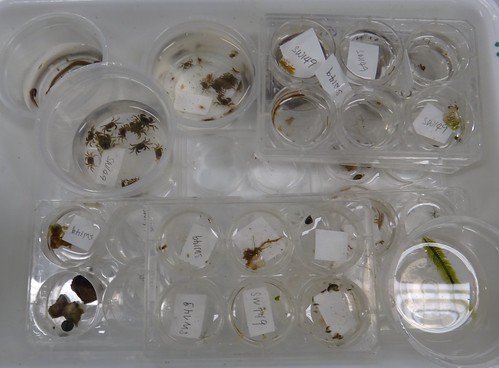
Sorting is tedious work, but very important;
(Photos by Ria)
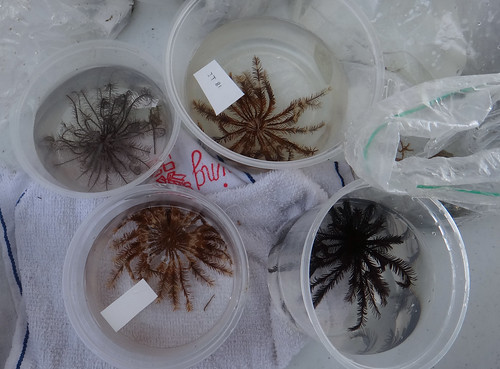
Some crinoids (feather stars), which will be identified by a scientist who specialises in this group of animals;
(Photo by Ria)
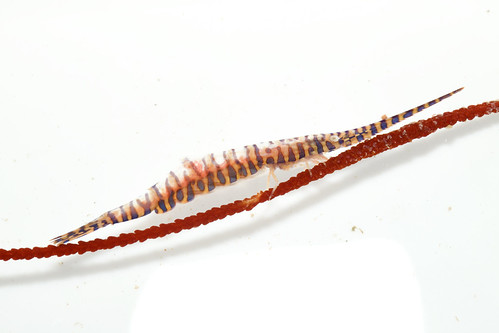
Sawtooth shrimp;
(Photo by Marcus)
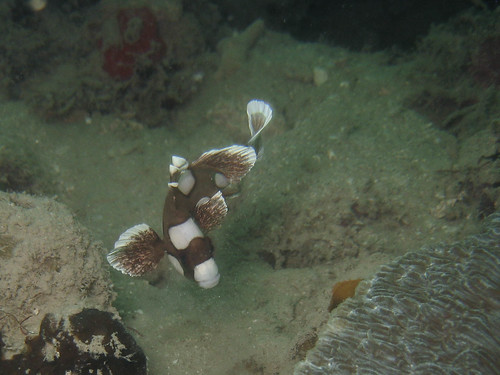
Juvenile harlequin sweetlips;
(Photo by Debby)
Similarly, volunteers form the backbone of many other groups and organisations, and anyone who's interested in making a difference can contribute, whether it's in terms of communicating the importance of our marine habitats to the general public, or offering an additional pair of hands to haul rubbish out of a mangrove.
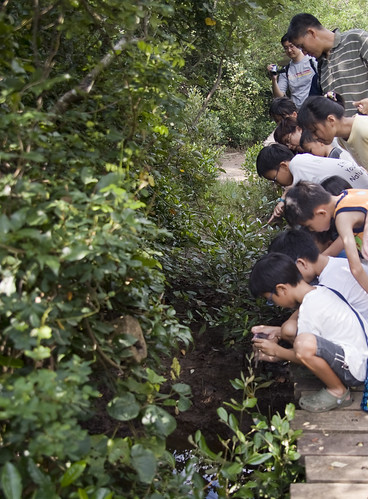
Children fascinated by the sights on the Chek Jawa Boardwalk;
(Photo by Ria)
For instance, people with a desire to share the beauty of our natural heritage can sign up to become guides with groups like the Naked Hermit Crabs and the Raffles Museum Toddycats!.
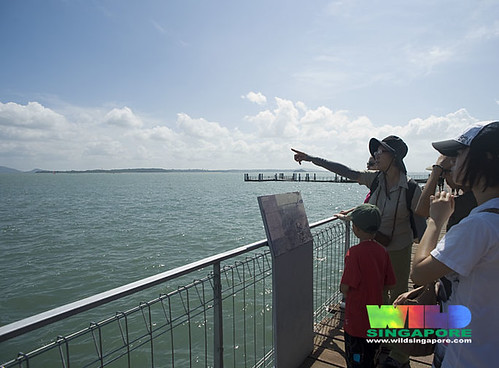
Ley Kun, a guide with the Naked Hermit Crabs, talks to visitors about the sights and sounds along the Chek Jawa Boardwalk;
(Photo by Ria)
Those who are keen in contributing to field research can join the Mega Marine Survey or TeamSeagrass.
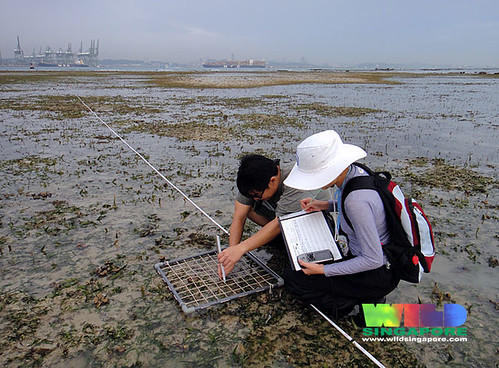
Monitoring seagrasses at Cyrene Reef;
(Photo by Ria)

Volunteers for the Mega Marine Survey hard at work on the mudflats of Kranji;
Maybe you are concerned about the impacts of trash on marine life; you can be involved in the International Coastal Cleanup Singapore or Project Driftnet.
![09earth-day-cleanup-tanah-merah-28apr2012[xu-weiting]](http://farm9.staticflickr.com/8145/6981033486_3d27072383.jpg)
Removing trash from a shore at Tanah Merah;
(Photo by Weiting, on Habitatnews)
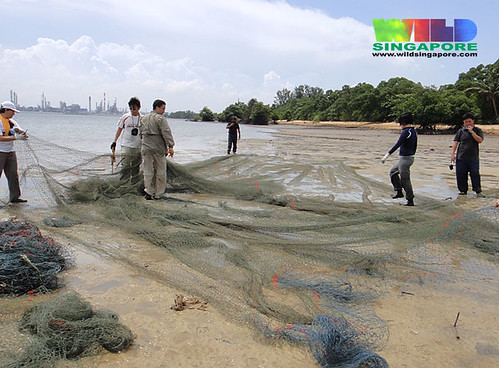
Disposing of a large net deposited on the shore at Pulau Semakau;
(Photo by Ria)
If you know how to dive and are up for the challenge, you can sign up with the Hantu Blog. My friend Debby coordinates these trips, mostly to Pulau Hantu, to show fellow divers that despite limited visibility, you can still find lots of interesting marine life on our reefs!
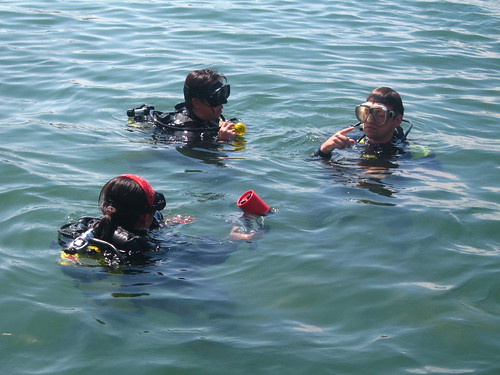
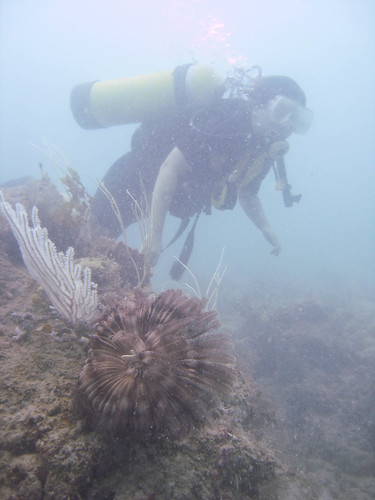
(Photo by Debby)
There are so many other groups and organisations out there which rely on ordinary citizens who are committed towards spending their time and energy to raise awareness of our natural heritage, or who are actively involved in research and conservation efforts.
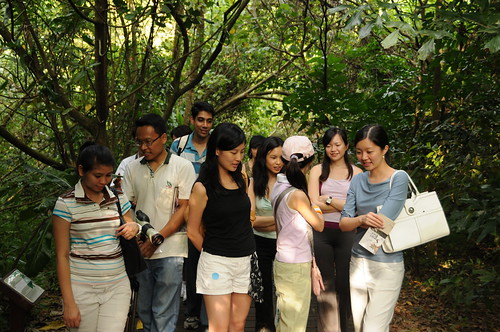
A guided walk at Sungei Buloh;
(Photo by terrapungent)
You can guide visitors around Sungei Buloh or Chek Jawa as a volunteer with the National Parks Board (NParks), or simply join some of the activities offered by the Nature Society (Singapore). Whether you decide to do something in your own personal capacity, or manage to convince your colleagues to commit as part of corporate social responsibility (CSR) obligations, you are helping to show others that Singapore's marine biodiversity is worth protecting.

Children fascinated by a knobbly sea star during a guided walk on Chek Jawa;
(Photo by Ria)
Even if you don't have the time to take part in volunteer-based activities on a regular basis, you can still join guided walks as a visitor, or head out on your own to explore. There are plenty of activities organised by various groups, and many of them are catered towards families with young children: Wild Happenings in Singapore has a list of upcoming events. By sharing and publicising your own encounters and experiences while visiting our shores and other coastal areas, you too can help increase public awareness of these places, and the often remarkable wonders that they contain; a lot of people are still woefully unaware of the beauty that is to be found, and besides, there are still plenty of gaps in our understanding. Much of what we know about our wildlife is based on sightings and observations shared by people who visit our blue spaces as part of a hobby, whether it's photographers, people with a love for watersports, or ordinary folks on a family outing. Just the simple act of posting photographs up on Facebook or Instagram or writing about your experiences on your personal blog can help increase awareness of the treasures that still survive here in Singapore, and even lead to further research.
Through the combined efforts of many people, whether it's in research, documentation through photography, habitat protection and restoration, outreach through guided walks and educational activities, advocacy by speaking up via public platforms about issues, or simply visiting and appreciating our wild places, we can each play a part in showing that there is another side to Singapore, one that deserves a lot more attention from the general populace.
![NHC Chek Jawa [6 April 2013]](http://farm9.staticflickr.com/8539/8624420450_88be92520b.jpg)
Families out on the boardwalk at Chek Jawa;
(Photo by Pei Yan)
It's easy to feel despair and hopelessness when grappling with many of the pressing issues and challenges regarding marine conservation in Singapore. But it gives me a great sense of motivation when I see other like-minded people with the passion and drive to do something, people who bring to the table their own set of skills and capabilities, with each individual doing his or her part to help foster and nurture a greater appreciation for an often overlooked aspect of living in a small island nation at the heart of a hotspot for marine biodiversity.
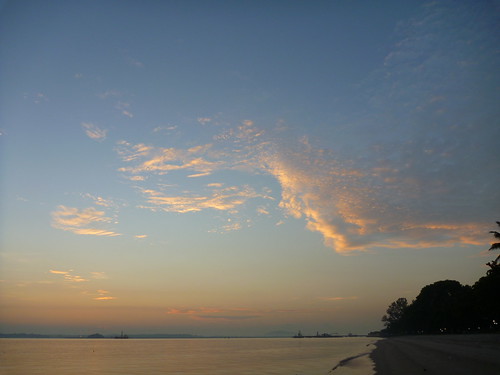
Dawn at Changi Beach;
Indeed, like the theme for this year's World Oceans Day says, together we have the power to protect the ocean.
(Some of the contents of this post was previously incorporated in "The Power of We": Nature Outreach & Environmental Efforts in Singapore)
(Cross-posted to SBA Plus. Do support me in the Singapore Blog Awards!)